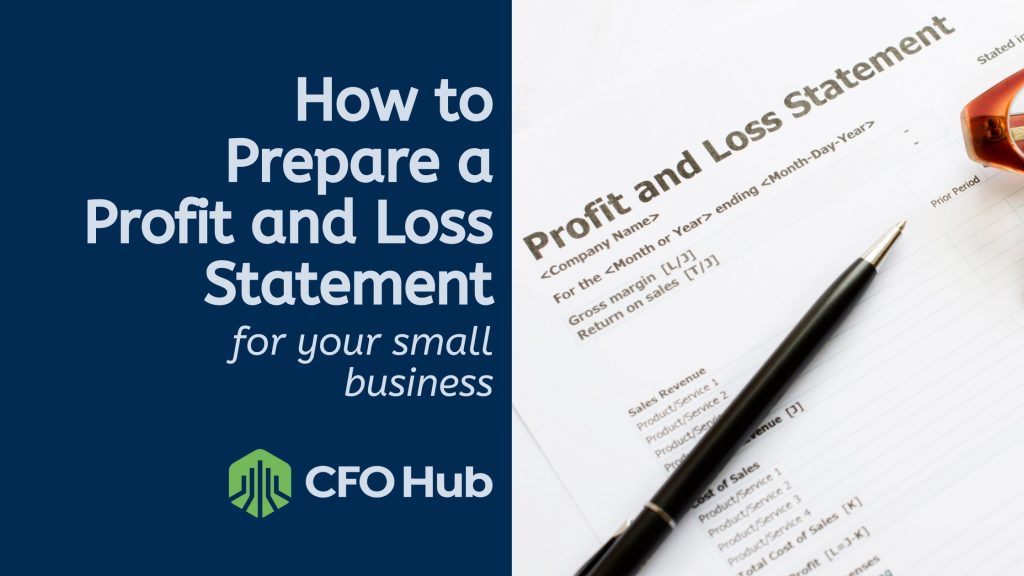In that regard, a profit and loss (P&L) statement is one of the three essential financial documents you need to know how to prepare and analyze. Armed with this knowledge, you will be better able to guide your business forward and map your financial projections.
Ready to learn how to prepare a profit and loss statement? Fantastic. Keep reading.
What Is a Profit and Loss Statement?
A P&L statement is sometimes referred to as an income statement.
This accounting scorecard compiles your company’s revenue and expenses during a set time period. With it, you can see where your cash inflows are coming from and where the outflows are going to. The document is demonstrative of a company’s ability to manage expenses, generate sales, and create profits based on revenue, expenses, capital, and cost of goods.
Typically, a P&L is broken down into smaller chunks, such as fiscal quarters or monthly statements, so as to have a clearer picture of the company’s fiscal health over time.
For publicly traded companies—massive enterprises all—a P&L is one of three financial statements that every business is required to issue to its stakeholders and the public at large on both a quarterly and annual basis. The other two are a cash flow statement and a balance sheet.
| Line Item | Description | Calculation/Example |
|---|---|---|
| Revenue (Sales) | Total income from selling goods or services during the reporting period. | Sum of all invoices issued. e.g., $100,000 in product sales + $25,000 in service fees = $125,000. |
| Cost of Goods Sold (COGS) | Direct costs attributable to production of the goods sold or services rendered. | Beginning inventory + Purchases during period – Ending inventory. e.g., $20,000 (beginning) + $50,000 (purchases) – $15,000 (ending) = $55,000. |
| Gross Profit | Profit after subtracting COGS from Revenue. Indicates core profitability. | Revenue – COGS. e.g., $125,000 – $55,000 = $70,000. |
| Operating Expenses | All indirect costs needed to run the business, broken into categories (e.g., payroll, rent, utilities, marketing). | Sum of payroll ($30,000) + rent ($10,000) + utilities ($2,000) + marketing ($5,000) = $47,000. |
| Operating Income (EBIT) | Income generated from core operations before interest and taxes. | Gross Profit – Operating Expenses. e.g., $70,000 – $47,000 = $23,000. |
| Non-Operating Income/Expenses | Income or expenses outside core operations (e.g., interest income, investment gains/losses). | Interest income ($1,000) – interest expense ($500) + gain on asset sale ($2,000) = $2,500 net. |
| EBITDA | Earnings Before Interest, Taxes, Depreciation, and Amortization. Shows cash-based operational profitability. | Operating Income + Depreciation ($3,000) + Amortization ($1,000). e.g., $23,000 + $3,000 + $1,000 = $27,000. |
| Interest, Taxes, Depreciation & Amortization | Detailed breakdown of non‐cash and financing costs incurred during the period. | Interest expense ($500) + Tax expense ($2,500) + Depreciation ($3,000) + Amortization ($1,000) = $7,000. |
| Net Income (Profit) | Final profit after subtracting all expenses (operating, non‐operating, interest, taxes, depreciation, amortization). | EBITDA – (Interest + Taxes + Depreciation + Amortization) + Non-Operating Income. e.g., $27,000 – $7,000 + $2,500 = $22,500 net income. |

How To Prepare a Profit and Loss Statement For a Small Business
According to Entrepreneur: “All P&Ls are based on a very simple formula — sales minus costs equals profit. It really is that simple. Everything else is a matter of breaking out sales or cost into more detail and adding subtotals. Sales are typically shown at the top of the P&L. Costs are shown below sales and profit is at the bottom.”
Currently, most small businesses will turn to automated software or an accountant to help them compile a P&L statement. But it is a fairly straightforward process you should at least know how to do, even if you do not regularly elect to do so.
Just follow these steps:
- Compile your financial statements and information – The majority of your P&L data will be pulled from your cash flow statements and the estimated calculations on depreciation. Here, your chief concern is income and expenditures, namely:
- Business transactions
- Purchases on the business card
- Petty cash transactions
- Income sources
- Choose a reporting period – P&L statements are tied to a specific period of time, generally either monthly, quarterly, or annually. What you choose depends on what you seek to accomplish.
- A month-end reconciliation report lets you confirm that your records match your bank statements and that you have the right level of goods on hand.
- Quarterly reports are required for larger companies. They allow you to gauge your revenue and expenses according to your budget and determine whether adjustments need to be made.
- Annual reports are also necessary and offer a more comprehensive view of the entire year’s worth of work.
- Discover your company’s revenue – List all of your sales for the given time period. For digestibility, it helps to break this up into smaller chunks, such as months or quarters.
- Subtract COGS to determine gross profits – Your cost of goods sold (COGS) represent the money necessary to produce the goods or services your company creates. In subtracting COGs from revenue, you get your gross profits.
- Detail your operating expenses – Break up all of your operating expenses into specific categories, such as payroll expenses and non payroll expenses. Adding up all of these expenses will give you your total operating expense. You can then subtract that from your gross profit in order to calculate your operating income.
- Include your non-operating income – This is organizational income that’s derived from non core business activities like dividends income, profits, or losses from investment. According to Investopedia, this is also sometimes referred to as incidental or peripheral income. And by separating non-operating income from operating income, investors have a better idea of how efficient the company is at turning revenue into profits.
- Calculate your EBITDA – Earnings before interest, taxes, depreciation, and amortization (EBITDA) = Operating profit + Interest income + dividends earned.
- Calculate your interest, taxes, depreciation, and amortization – Determine any expenses you may have from interest, taxes, depreciation, and amortization.
- Calculate net income – You can do this by subtracting the interest, taxes, depreciation, and amortization from the EBITDA.
Benefits of a P&L
Your P&L grants visibility over your fiscal health and performance. It allows you to see:
- Gains
- Losses
- Trends
- Cost savings opportunities
By regularly assembling a P&L statement, you empower your business to excel since you have greater ownership and control over your company’s profits and losses. It can help ensure that the company stays fiscally viable and capable of achieving its goals.
One of the most useful features of a P&L is the ability to compare current performance against previous periods. As the Small Business Chronicle notes, trend analysis provides business owners with a significant competitive advantage:
If cash and cash equivalents are down year-over-year, leaders are able to identify the trend and develop explanations for the negative change. The same goes for inventory accounts, accounts receivable and other line items on standard financial statements. Comparing three or more years’ statements enhances the trend analysis and helps management forecast future operating activity.
But that’s not all a P&L does.
It allows you to evaluate your performance according to the percentage increase or decrease of expenses and sales. A P&L also helps you identify accounting discrepancies—be they errors, omissions, or intentional misreporting. And finally, multiple years of financial statements can better inform your strategic decision-making.
CFO Hub – Expert Accounting
As a business owner, it’s important that you have basic financial literacy. You should be able to read and understand the story the numbers are telling in your financial statements.
But you may not have time or the expertise to compile these documents on your own. For that, you may need some help.
Enter CFO Hub. Here, we offer outsourced accounting solutions and financial expertise to growing companies like your own. Whether you need financial statements and reporting or general accounting support, we have the professional financial wizards you need to succeed.
Want to find out more? Contact us today.
Jack Perkins, CPA founded CFO Hub to provide strategic finance and accounting services to enterprises of all sizes. Prior to founding CFO Hub, Jack served as the CFO and Controller of rapidly growing enterprises in California. Jack's written content has been featured in Forbes, Entrepreneur, and several other notable publications.
Visit Jack's Expert Hub to learn more about his experience and read more of his editorial content

